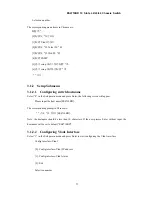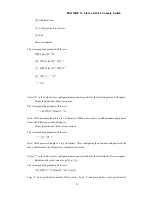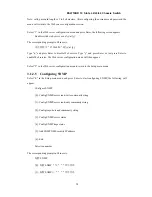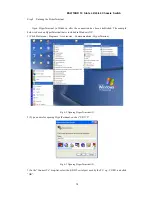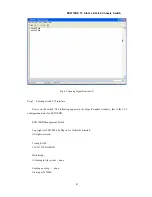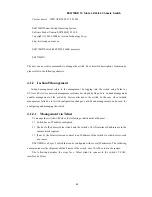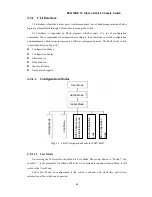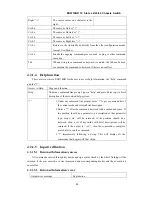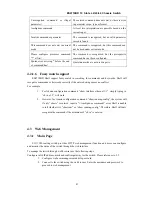
77
E
ES4710BD 10 Slots L2/L3/L4 Chassis Switch
Select “3” in the SNMP configuration menu and press Enter, the following screen will appear:
Enable SNMP-server? (y/n) [y]:
The corresponding prompt in Chinese is:
是否使能交
机
SNMP? (y/n) [y]:
Type “n” and press Enter to disable SNMP service. Type “y” and press Enter, or just press Enter to
enable SNMP service. The SNMP configuration menu will then appear.
Select “4” in the SNMP configuration menu and press Enter, the following screen will appear:
Enable SNMP-traps ? (y/n) [y]:
The corresponding prompt in Chinese is:
是否使能交
机
送
Traps ? (y/n) [y]:
Type “n” and press Enter to disable SNMP traps. Type “y” and press Enter, or just press Enter to
enable SNMP Traps. The SNMP configuration menu will then appear.
Select “5” in the SNMP configuration menu and press Enter, the following screen appears:
Please input the new NMS IP address(A.B.C.D):
The corresponding prompt in Chinese is:
入要添加的
SNMP
管理站安全
IP
地址
(A.B.C.D):
When a valid secure IP address(es) for SNMP management workstation is entered, press Enter to
return to the SNMP configuration menu.
Selecting “6” in the SNMP configuration menu to return to the Setup main menu.
3.1.2.6 Exiting Setup Configuration Mode
Select “5” in the Setup main menu to exit the Setup configuration mode without saving the
configurations made.
Selecting “6” in the Setup main menu to exit the Setup configuration mode and save the
configurations made. This is equivalent to running the
Write
command. For instance, if under the
Setup configuration mode, the user sets a Telnet user, enables Telnet service, and then selects “5” to
exit Setup main menu, he/she will be able to configure the switch through Telnet from a terminal.
When exiting the Setup configuration mode, the CLI configuration interface appears. Configuration
commands and syntaxes will be described in detail in later chapters.









